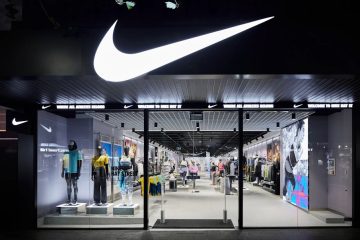Why Urban Outfitters Is Getting Kicked Out of a Major Stock Market Index

The tough times continue for Urban Outfitters.
Amid a bout of sales turmoil, the company has been booted from the S&P 500, after that index raised its market cap guidelines Friday afternoon. The change, set to go into effect before trading on March 20th, will relegate the retailer and its $ 2.87 billion market cap to the S&P MidCap 400, which as of that date will include companies that have a market cap between $ 1.6 billion and $ 6.8 billion.
But while Urban Outfitters’ slide out of the S&P 500 is something to take note of, it’s just a symptom of the considerable problems that the company faces. Urban Outfitters’ sales have been sluggish as of late, causing an up-and-down stock performance over the last couple of years. After reaching an all-time high of $ 47.01 two years ago, shares of the company (urbn) have fallen more than 48%, sitting at $ 24.34 in midday trading Monday. The price slump has brought the share price within a couple dollars of its lowest level since September 2011.
Last week, Urban Outfitters released a disappointing quarterly earnings report. The company, which owns retailers Anthropologie and Free People as well as the chain that shares its name, generated $ 1.03 billion in revenue for the quarter, with earnings per share coming in at $ 0.55. Both figures slightly missed analysts’ expectations, and profit margins fell to 33% from 34.5% a year ago due to the company’s increasing reliance on discounting to keep customers coming into its stores.
Lagging sales at brick and mortar locations have prompted Urban Outfitters to focus more and more on online retailing. Sales over the internet increased at a double-digit pace last quarter, but that news isn’t actually as good as it sounds. High delivery expenses and other logistical costs have eaten into the company’s profits, even when taking into consideration the fact that online commerce needs no storefront and retail employees. In three years, Urban Outfitters said it expects online sales to roughly equal store sales, which will make profit margins lower than they already are unless the company comes up with some creative organizational solutions.
Slumping store sales, a problem that retailers in general are dealing with, seem to be causing the company’s biggest problems. Combining all three of its brands, Urban Outfitters operates roughly 330 stores in the U.S., with a slew of them having opened in just the last few years. In the past, Urban Outfitters has been able to grow revenue by opening new locations even when same-store sales figures were essentially flat, but it’s getting hard to justify opening more new stores.
The company has plans to open only 15 new locations in North America this year, down from the 26 it opened last year and the 29 it opened in 2015. In the company’s earnings call last week, CEO Richard Hayne said he felt there has been a retail bubble, where there are now too many retailers that have too many locations. Hayne said he’d rather wait until the bubble fully bursts and rents come down before committing to signing more leases to open more storefronts.










